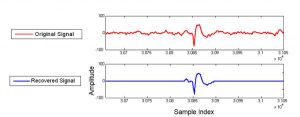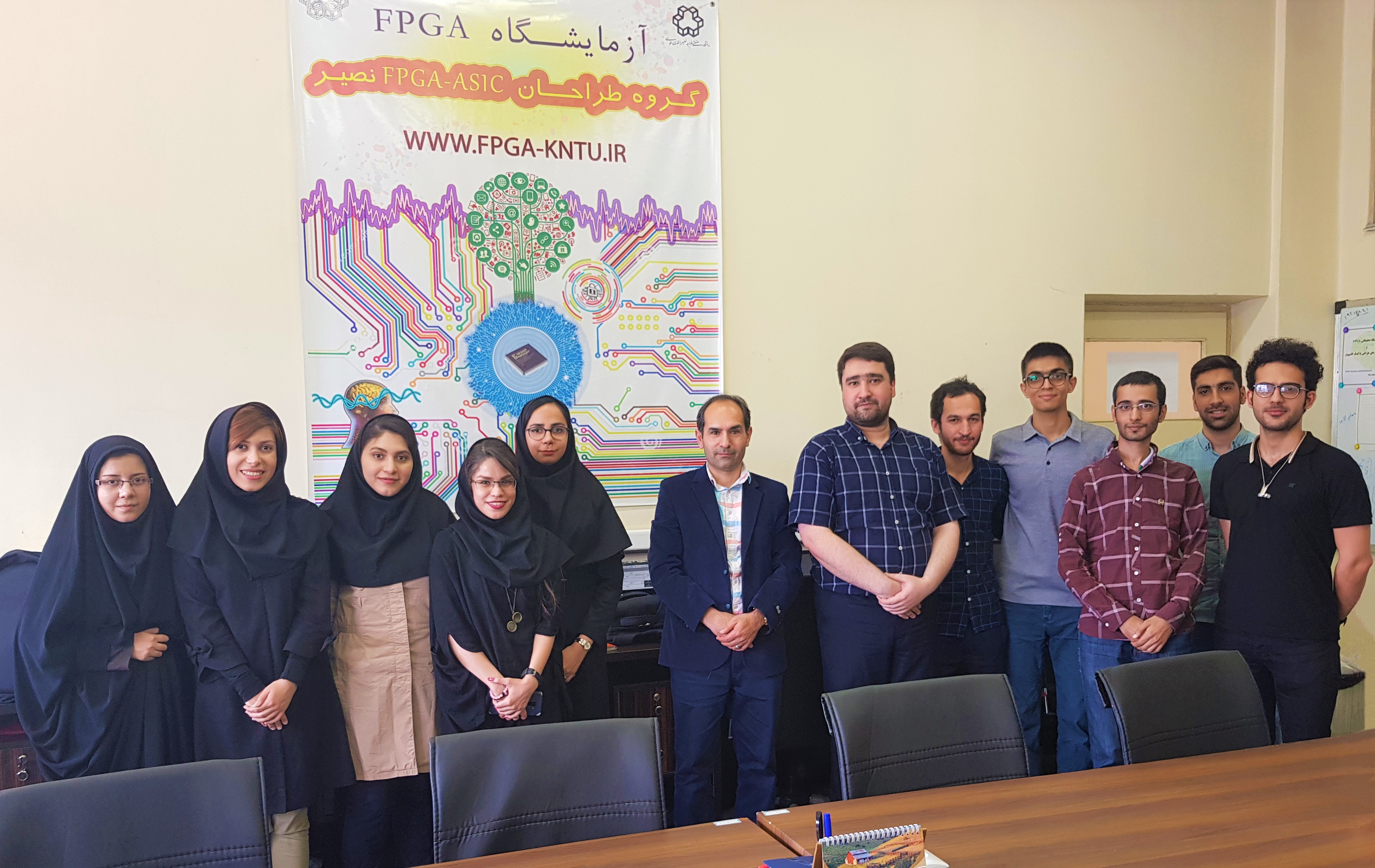Research Fields of Integrated Digital Processing (IDP) Lab
The research activities of this lab are listed in 3 fields:
1. Intra-cortical Neural Signals Processing Dedicated to Implantable Brain-Machine Interfaces
2. EEG Neural Signal Processing for Prediction and Detection of Epileptic Seizures
3. Designing and Hardware Implementation of Machine Learning Algorithms based on FPGA/ASIC
In the following sections, by some projects performed in IDP Lab, the cited topics are explained:
Intra-cortical Neural Signals Processing Dedicated to Implantable Brain-Machine Interfaces
Related projects to this topic are categorized as 3 sub-sections, including the Compression of intra-cortical neural signal, Neural spike sorting, and Decoding of neural signals, which are discussed in more detail in the following.
Compression of Intra-cortical Neural Signal
Fig.1 shows the block diagram of an intra-cortical neural recording system.

As illustrated in the figure, after pre-conditioning the extra-cellular neural signals archived by recording electrodes, it is digitized and should be wirelessly transferred to the outside of the body. Not only is it vital to compress the neural signals for the growing number of simultaneously recoding channels, but also it is crucial for the wireless bandwidth limitation. Neural signals compression using unitary transforms, especially via Walsh-Hadamard Transform (WHT) and Discrete Cosine Transform (DCT), was proposed by IDP Lab researchers [1,2]. Two multi-channel compression systems based on the named approaches were designed and implemented by considering implantable microsystems constraints in terms of area and power consumption.
In another IDP Lab project, neural spike compression is performed by employing random sampling and is reconstructed using IMATI [3]. Fig.2 presents an original neural signal and its recovered output, which has been compressed by random sampling.

Additionally, another M.Sc. project was defined for neural spike compression using vector quantization [4].
Neural Spike Sorting
Since in intra-cortical neural recording, multi-units’ activities are recorded -by adopting the spike sorting step using each electrode- the spikes can be assigned to their neurons. In IDP Lab, some MSc projects have been defined to propose new spike sorting algorithms that are suitable for implantable brain-machine interfaces.
Decoding of Neural Signals
Decoding neural signals is the translation process of neural activities to control signals, which can be utilized as a command from the motor cortex to a prosthesis device. In IDP Lab, some projects have been defined on the subject of decoding neural signals, hence researchers are currently studying both classic and machine learning decoding algorithms.
EEG Neural Signal Processing for Prediction and Detection of Epileptic Seizures
Epilepsy is a neurological disorder that affects more than 1% of people worldwide. About 30% of these patients are drug-resistant, and their sudden, as well as recurrent seizures, are not cured. For these patients, the prediction and early detection of seizures can significantly improve the quality of their life. In IDP Lab, three MSc projects were defined on this topic. In one of these projects, not only is a real-time approach for the prediction of epileptic seizures proposed but also the hardware implementation of the algorithm is presented. [5].
Designing and Hardware Implementation of Machine Learning Algorithms based on FPGA/ASIC
Recently, Hardware Implementation of machine learning algorithms with consideration of speed, area, and power consumption has been very attractive for many applications. In IDP Lab, our teams work on the hardware implementation of multi-layer perceptron neural networks and deep neural networks such as convolutional, LSTM as well as autoencoders.
For more information, you can follow these publications:
[1] H. Hosseini-Nejad, A. Jannesari, A.M. Sodagar, “Data Compression in Brain-Machine/Computer Interfaces Based on the Walsh–Hadamard Transform,” IEEE Transaction on Biomedical Circuits and Systems, vol. 8, no.1, pp. 129-137, Feb 2014.
[2] H. Hosseini-Nejad, A. Jannesari, A.M. Sodagar, J. N. Rodrigues, “A 128-channel discrete cosine transform-based neural signal for implantable neural recording microsystems,” International Journal of Circuit Theory and Applications, vol. 43, no.4, pp. 489-501, 2015.
[3] E. R. Sarbandi, E. Taghavi, H. Hosseini-Nejad,” Neural Spike Compression Based on Random Sampling and IMATI Techniques,” in 26th Iranian Conference on Electrical Engineering, pp. 1425-1428, 2018.
[4] N. A. Dastgerdi, H. Hosseini-Nejad, H. Amiri, ” Neural Spike Compression Based on Split Vector Quantization for Implantable BMIs,” in 27th Iranian Conference on Electrical Engineering, 2019.
[5] H. Sadeghzadeh, H. Hosseini-Nejad, S. Salehi, “Real-time Epileptic Seizure Prediction Based on Online Monitoring of Pre-ictal Features”, Journal of Medical & Biological Engineering & Computing, no. 57, pp. 2461–2469, 2019.




